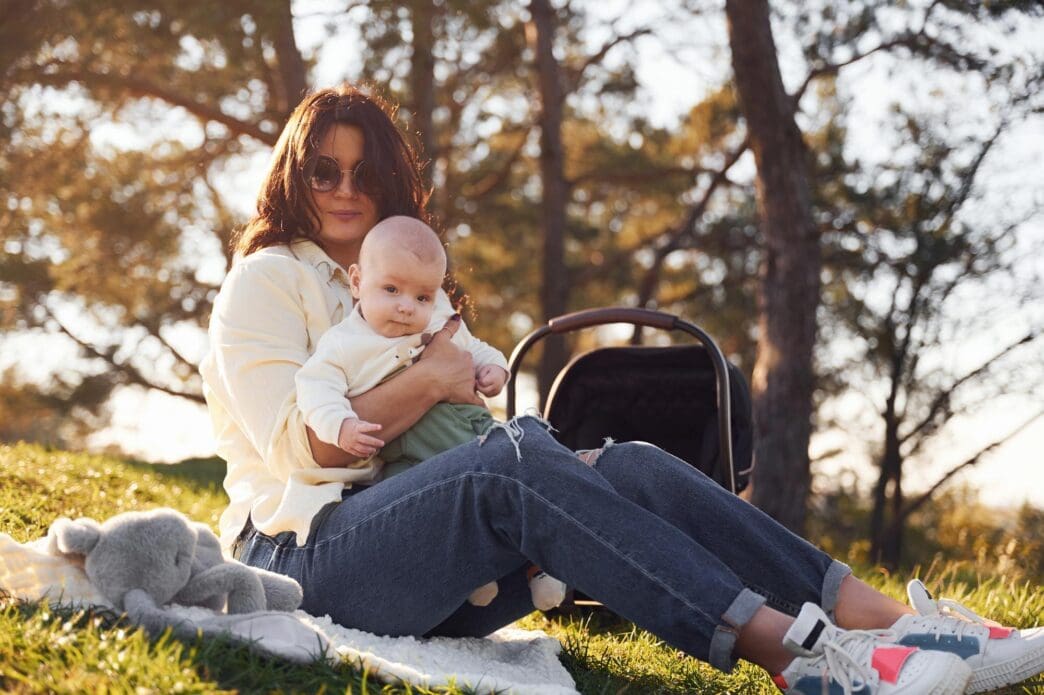A Quick Takeaway
The Story Behind the Trend
How to Make It Work for You
The Community View
Families seeking to integrate outdoor activity with the joys of parenthood can confidently hit the trails with their little ones by mastering baby carrier hiking and walking. This accessible method allows parents and caregivers to explore nature, from local parks to more challenging hikes, while keeping infants and toddlers securely and comfortably close. It’s an excellent way to foster a love for the outdoors, enjoy physical exercise, and strengthen family bonds, offering a unique blend of adventure and practicality for all involved.
The Benefits of Baby Carrier Hiking
Venturing outdoors with your child in a carrier offers a multitude of advantages for both parent and baby. It transforms a simple walk into an opportunity for shared discovery and well-being.
For the Parent
For parents, baby carrier hiking provides an excellent full-body workout, engaging core muscles, legs, and back. It supports mental well-being by reducing stress and boosting mood through exposure to nature and physical activity. This method also grants a sense of freedom, allowing parents to navigate varied terrain where strollers might struggle, maintaining an active lifestyle without needing childcare.
For the Child
Children benefit immensely from the sensory richness of the outdoors, experiencing sights, sounds, and smells that stimulate development. Being close to a parent fosters a strong bond and a sense of security, which is crucial for emotional growth. Fresh air and natural light exposure can also contribute to better sleep patterns and overall health for the baby.
Choosing the Right Baby Carrier
Selecting the appropriate baby carrier is paramount for comfort, safety, and the type of activity planned. Different carriers are designed for various stages of development and durations of use.
Soft-Structured Carriers (SSCs)
SSCs are highly versatile, offering ergonomic support for both parent and child with padded straps and a structured waistbelt. They are excellent for shorter walks, everyday use, and can often be used from infancy through toddlerhood. Look for models that ensure your baby’s hips are in an “M” position, with knees higher than their bottom.
Frame Backpack Carriers
For longer hikes and older, heavier babies or toddlers, a rigid frame backpack carrier is often the best choice. These carriers feature a sturdy internal or external frame, distributing weight efficiently to the parent’s hips and shoulders. Many include substantial storage compartments for gear, water, and snacks, along with sun canopies and stirrups for the child’s comfort.
Wrap Carriers & Ring Slings
While excellent for newborns and infants for everyday wear and gentle walks, wrap carriers and ring slings are generally less suited for rugged hiking due to their less structured support. They offer wonderful closeness and adjustability but may not provide the same stability or weight distribution needed for uneven trails or extended periods.
Key Features to Look For
Regardless of the type, prioritize carriers that promote an ergonomic “M” shape for your baby’s hips to prevent hip dysplasia. Adjustable straps are crucial for a comfortable and secure fit for various parent body types. Features like a sun/rain canopy, ample storage pockets, and a sturdy kickstand (for frame carriers) enhance the overall experience. Always check the carrier’s weight limits to ensure it’s appropriate for your child’s size.
Prioritizing Safety on the Trail
Safety is the cornerstone of any outdoor adventure with a baby. Proper preparation and adherence to safety guidelines are non-negotiable.
Proper Fit and Positioning
Ensure the carrier is worn snugly and securely, with your baby positioned high enough to kiss their head. Follow the “TICKS” rules for safe babywearing: Tight, In view at all times, Close enough to kiss, Keep chin off chest, and Supported back. Always verify your baby’s airway is clear and unobstructed.
Weather Considerations
Dress your baby in layers, as their body temperature regulation is not as efficient as an adult’s. Protect them from sun exposure with a wide-brimmed hat, sunscreen (for babies over 6 months), and a carrier sunshade. In colder weather, ensure they are adequately insulated, watching for signs of overheating or being too cold. Always check the forecast before you go.
Trail Selection
Start with flat, well-maintained paths or paved trails to build confidence and endurance. Avoid overly technical terrain, steep inclines, or slippery surfaces, especially when first starting out. As you gain experience, you can gradually introduce more challenging routes, but always prioritize safety over ambition.
Hydration and Nutrition
Carry plenty of water for yourself and ensure your baby stays hydrated. If breastfeeding, you may need to increase your own fluid intake. For formula-fed babies or older toddlers, bring pre-measured formula, clean bottles, or appropriate snacks. Frequent breaks for feeding and hydration are essential.
Essential Gear and Preparation
A well-packed bag can make all the difference between an enjoyable outing and a stressful one.
Packing List
Beyond water and snacks, include diapers, wipes, a small changing pad, and a plastic bag for soiled items. A first-aid kit with essentials for both parent and baby is crucial. Don’t forget sun protection, insect repellent (if appropriate for your baby’s age), extra layers of clothing for sudden weather changes, and a fully charged phone for emergencies and navigation.
Pre-Hike Checks
Before heading out, perform a quick inspection of your carrier for any wear and tear. Double-check the weather forecast and any relevant trail conditions or closures. Inform someone of your planned route and estimated return time, especially if you’re venturing into more remote areas.
Technique and Comfort
How you carry yourself while hiking with a baby can significantly impact your comfort and endurance.
Maintaining Good Posture
Engage your core muscles to support the extra weight and maintain an upright posture. Avoid slouching, which can strain your back and shoulders. Adjusting your carrier’s straps properly will help distribute the weight evenly, preventing undue pressure points.
Pacing Yourself
Start at a comfortable pace and be prepared to take frequent breaks. Listen to your body and your baby. It’s not a race; the goal is to enjoy the experience together. Breaks offer opportunities for feeding, changing diapers, or simply stretching and enjoying the scenery.
Addressing Baby’s Needs
Regularly check on your baby’s comfort, ensuring they aren’t too hot or cold, and that their position remains ergonomic. Be prepared for feeding times and diaper changes, as these will likely dictate your breaks. A happy baby makes for a happier hike.
Progressing Your Adventures
Building up your stamina and your baby’s comfort with hiking is a gradual process.
Start Small
Begin with short, familiar walks in your neighborhood or local park. This allows both you and your baby to get accustomed to the carrier and the movement. Gradually increase the duration and distance as you both become more comfortable.
Gradual Increase
Once you’re comfortable with shorter walks, slowly introduce slightly longer distances or trails with gentle inclines. Pay attention to how both you and your baby are feeling, and never push beyond your limits. The goal is to build endurance progressively and safely.
Listen to Your Body and Baby
Always prioritize safety and enjoyment. If you or your baby are showing signs of discomfort or fatigue, it’s time to turn back or take a longer break. These adventures should be positive experiences that foster a love for the outdoors, not a test of endurance.
Embracing baby carrier hiking and walking opens a world of outdoor exploration for new parents, offering significant physical, mental, and bonding benefits. By carefully selecting the right carrier, adhering to crucial safety guidelines, and preparing adequately, families can confidently embark on adventures together. Remember to start gradually, listen to your body and your baby, and cherish the unique connection forged amidst nature’s beauty.







